Meet The Cohort
Ailtire
Ailtire
As part of our AI Venture Forge “Meet the Cohort” series, we’re thrilled to feature one of the most forward-thinking startups transforming how we secure digital infrastructure: Ailtire. They’re not just improving cybersecurity – they’re redefining how we design secure systems from the ground up, with an AI-first approach to threat modeling and resilience.
Ailtire is the AI-powered platform redefining cybersecurity threat modeling to deliver faster, smarter, secure-by-design systems.
Website
Company | Cyber Security


What drove you to build an AI-powered cybersecurity platform?
Ailtire started with a needs-led approach. We went out to industry, engaging in over 100 conversations with CISOs, security architects, engineers, and compliance leads, to understand the real-world challenges teams face when trying to build secure systems.
What we consistently heard was that while “security by design” is the aspiration, it’s incredibly difficult to achieve in practice. Fast-moving teams struggle to integrate security early enough, and traditional threat modelling is too manual, too slow, and often disconnected from how modern systems are actually built.
That’s why we built Ailtire. By applying AI to automate the heavy lifting, identifying threats, mapping them to frameworks, and suggesting mitigations, we empower project teams to design securely from day one. It brings threat modelling into the flow of delivery, not as a blocker, but as an enabler.
How does Ailtire’s threat modelling differ from current solutions?
Most threat modelling tools today are static, manual, and designed primarily for specialist security teams. They rely on fixed templates and generic threat libraries that rarely reflect the complexity or context of real-world systems.
Ailtire takes a fundamentally different approach. Designed as an AI-native platform, it can analyse a wide range of inputs—system designs, documentation, infrastructure configurations—and combine them with organisational context such as risk appetite, internal frameworks, and compliance obligations. This enables highly tailored, relevant threat modelling that reflects how each organisation actually builds and operates.
Our vision is to empower project teams—not just security specialists—to take ownership of security from the start and embed it throughout the entire project lifecycle.
The result? Security becomes a built-in advantage, not a last-minute blocker—reducing risk, cutting rework, accelerating compliance, and protecting the business without slowing down innovation.
What benefits can customers expect from “secure-by-design” systems?
Secure-by-design systems reduce risk, accelerate delivery, and simplify compliance. By identifying threats early—at the design stage—teams can address issues before they cause costly rework, delays, or security gaps. This leads to faster, smoother delivery with fewer blockers and last-minute surprises.
Ailtire enables teams to build systems that align with security and regulatory frameworks—such as NIS2, or organisation-specific standards—as part of the architecture itself. Because threats and mitigations are captured throughout the process, Ailtire also provides clear, auditable evidence of security by design for internal governance and external regulators.
The result is high-quality systems delivered faster, with risk reduced, teams unblocked, and compliance built into the foundations.

What will you focus on during the Venture Forge programme?
Our main focus is preparing Ailtire for early growth—both commercially and technically. We want to sharpen our go-to-market approach, challenge our pricing and positioning, and get investor-ready for the next stage.
The access to experienced mentors is a big draw for us. We’re looking forward to honest conversations that help us stress-test our assumptions, especially around how we communicate the value of Ailtire to both buyers and investors.
We’re also using the time to refine the AI core of our product—making sure it delivers real, usable outputs that fit into fast-moving project workflows. By the end of the programme, we want to have a clear and confident pitch, strong early traction, and a focused path to scale.
How could the international trip support your market development?
We’re excited about both international trips—San Francisco and Paris—because they give us the chance to explore two very different but globally significant AI ecosystems and test our approach in new markets.
San Francisco is the global epicentre of AI innovation and enterprise tech adoption. It’s the perfect environment to put Ailtire in front of experienced buyers, fast-moving product teams, and investors who are actively backing AI-first platforms. We see it as a high-value opportunity to sharpen our commercial approach, build investor connections, and explore early partnerships in a market that sets the pace globally.
Paris is emerging as a leading AI hub in Europe, with strong momentum around regulation, responsible innovation, and public-private collaboration. It’s a hugely valuable opportunity to connect with AI-first companies, policy influencers, and enterprise leaders, and to explore partnerships that could support European expansion.
Ailtire is built to adapt across sectors and regions, and these trips will give us the insight, relationships, and strategic grounding we need to refine our messaging, accelerate our market entry, and lay the foundations for international growth.
What challenges do you face breaking into the security industry?
Cybersecurity is a high-trust, high-stakes industry—and expectations are especially high when you’re selling into enterprise. Buyers need confidence not just in what your product does, but in how it’s built, how it’s governed, and how it will perform under pressure.
We’re meeting that head-on by building Ailtire securely from the start. That means embedding secure-by-design in our own architecture, aligning with standards like ISO 27001 and SOC 2, and putting the right governance and assurance measures in place as we scale.
We’re also tackling a space—threat modelling and secure-by-design—that’s historically been under-prioritised. Many teams still rely on manual workarounds or skip the process entirely. Part of our challenge is showing how this can be done differently—and proving that it delivers real outcomes.
Fortunately, the landscape is shifting fast. Secure-by-design is already mandated in frameworks like PCI DSS, and regulations like the EU Cyber Resilience Act and NIS2 are making it a core compliance expectation. We’re building for that future—and helping organisations get ahead of it.
What does success look like for Ailtire 12–18 months down the line?
In 12–18 months, success means Ailtire is being used by real project teams to embed security earlier and deliver with more confidence. We want to see our platform live in production environments, helping organisations design systems that are both secure and compliant—without slowing down delivery.
We’re aiming for strong traction with early adopters, clear evidence of value through customer outcomes, and integration into real workflows. We also want to build on the trust we’ve started to establish: meeting enterprise security standards, progressing through certifications, and continuing to grow with our customers.
Commercially, success means repeatable sales, design partner conversions, and a solid foundation for international expansion.
From a product perspective, we’ll continue to invest in our AI capabilities to make threat modelling more scalable, intuitive, and usable across entire project teams—not just security specialists. Our goal is to support broad adoption, so secure-by-design becomes a natural part of how systems are built, not a separate task.
Ultimately, success is knowing we’re not just building a tool—we’re helping shift the way organisations think about and deliver secure software.




